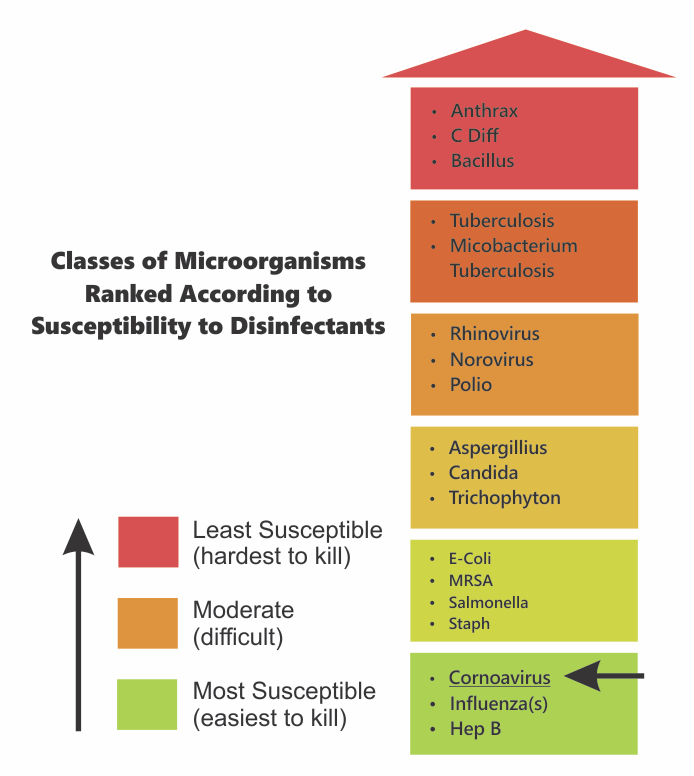Symptoms & Methods of Transmission
- Symptoms
- Fever >100.4 degrees
- Cough
- Shortness of Breath
- Appears 2-14 days post-exposure
- Spread methods
- Person to Person – Most likely due to respiratory droplets from sneeze or cough, Close contact < 6 feet
- Surface or Object to Person – Less likely. This may change as more testing is done.
- Community Spread – Spread of virus can not be traced to direct contact.
If you believe you have been exposed
- Self-Monitor
- If I have been in an area where there may have been someone who has been diagnosed with COVID-19.
- Watch closely to make sure no symptoms appear in 2-14 days.
- Self-Quarantine
- If I have had close contact with someone diagnosed with COVID-19. Closer than 6 feet.
- Stay home and avoid close contact for a period of 14 days.
- If Symptoms Develop
- Contact a local healthcare professional and tell them about your recent travel or contact.
- They will work with your state’s public health department and CDC to determine if you need to get tested.
CDC Recommendations | ServiceMaster Solutions |
| 1. Emphasize hand hygiene by all employees | A. Perform frequent hand washing using soap and water for 20 seconds (happy birthday twice) or utilize an alcohol-based hand sanitizer that contains at least 60% alcohol B. If possible, utilize no-touch dispensers (e.g. paper towels, skins, soap) C. Post ServiceMaster hand hygiene process posters in handwashing areas D. Keep an adequate supply of products keeping in mind product shelf life |
| 2. Emphasize respiratory etiquette by all employees | A. Employees should cover their mouth & nose with a tissue when coughing or sneezing. If tissue is not available use elbow or shoulder to cover your mouth B. Provide tissues & no-touch disposal receptacles for use by employees |
| 3. Perform routine environmental cleaning focused on high touch surfaces | A. Nightly clean and disinfect high-touch surfaces in the workplace focused on common gathering areas (e.g. door handles, light switches, rails, elevator buttons, phones, microwaves, coffee stations, sink handles, water fountains, chair arms, shared workstations or learning materials, dining tables) B. Provide disposable wipes for employees to clean and disinfect commonly used or high-touch surfaces between use |
| 4. Encourage sick employees to stay home separating and avoiding close contact with people who are sick | A. Actively encourage sick employees to stay home if they have symptoms of acute respiratory illness until they are free of fever (100.4 degrees or greater using an oral thermometer), signs of fever, and any other symptoms for 24 hours without medication B. Maintain flexibles policies that permit employees to stay home for family members and consistent with public health guidance C. Avoid close contact with people who are sick D. Avoid touching your eyes, nose, and mouth E. Send out and post ServiceMaster COVID-19 symptoms and infection prevention documents to employees |
| 5. Advise employees to take safe travel steps | A. Check CDC traveler’s health notices – especially when traveling internationally B. Have a plan for employees if they become sick during travel – promptly call a provider for help if needed |
| 6. Additional measures with COVID-19: Employees who are well but have a family member with COVID-19 should notify their supervisor and other employees in the workplace | A. Have employees notify their supervisor if they have a sick family member at home with COVID-19 B. In that case, notify employees of potential exposure but maintain confidentiality C. In the event of an outbreak have plans in place for working remotely if possible. |
COVID-19 (coronavirus) is an emerging Pathogen and new information becomes available on a regular basis. Material in this presentation is based on the information that is available at this time. It comes from several sources including the CDC, World Health Organization, ISSA, GBAC, OSHA, and other materials. The information contained may be updated at any point by the organizations mentioned. It is the responsibility of every person to stay current on new information regarding COVID-19 and responsibilities in your location/county/state.


